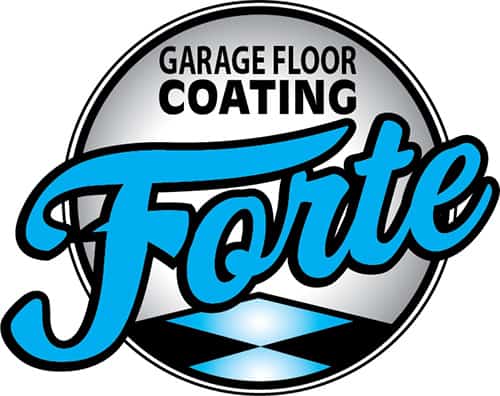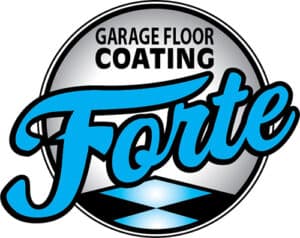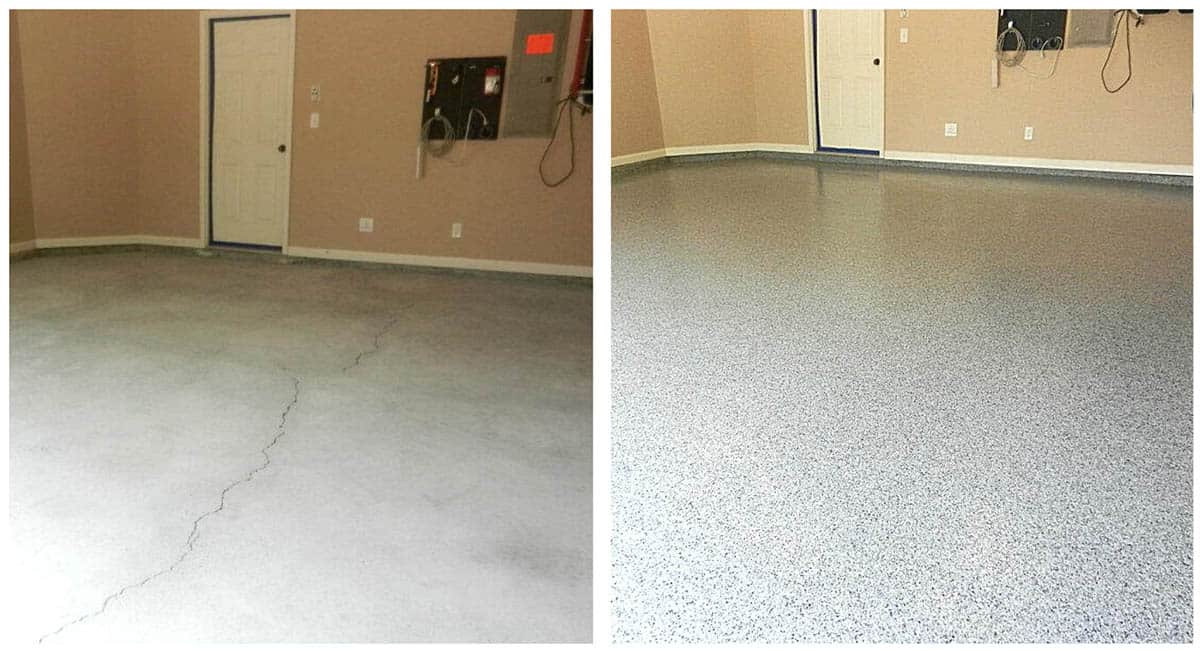By far the most important step in the application process of a coating system is the preparation of the concrete. Concrete repair is an important step in the preparation process. Concrete repair includes fixing cracks, spalling, and indentations. The goal is to restore the surface to being flat, so after the coating is applied it will appear brand new. Failure to address concrete repairs will show through in the final results, and can worsen with time.
Why You Need Concrete Repairs
Regions with harsh winters can exacerbate both cosmetic and structural issues in the concrete. As water freezes and thaws, it expands and contracts, taking a toll on the concrete with each cycle. As the freezing water expands, it opens cracks and pits wider. Once the water melts, the newly opened damaged areas fill back in with water, beginning the cycle anew. This will happen even with concrete laid perfectly, making it a step in the preparation process that cannot be overlooked regardless of the job.
Small Concrete Repairs
Of course, there are different repair processes and products depending on the issue. Hairline cracks, saw cuts, and tool joints are examples of small repairs. While saw cuts and tool joints are not damaged areas of concrete, they will show through the floor coating if not filled. They are put into the concrete when it is laid to ensure the concrete does not crack due to shrinking and temperature changes. Also, concrete slabs can move on their own, so when the space between them isn’t filled, it will be very obvious through the coating on top.
The solution to small repairs such as this is siliconized acrylic latex caulk. It is easy to apply to small areas. Additionally, it’s a very effective way to flatten the surface and fill in those small gaps. However, some tool joints and saw cuts may require the addition of backer rods to fill in some extra space. As such, it is important to remember that caulking should never be used to fill large or excessive gaps in concrete. It is a great solution for small repairs, but larger ones require more robust products.
Large Concrete Repairs
Large repair zones (cracks and pits wider than a dime’s thickness) and broken concrete edges require products other than caulk. Caulking is simply not the proper product for such repairs, and will not be effective. The concrete will require more repairs in short order. The best products for such large repairs are polyaspartic and polyurea compounds. These compounds are quick curing, lightweight, and elastomeric (flexible). Many of these products also have thick consistencies, allowing them to bond well with even vertical surfaces. Larger surfaces may even require 3-part mixtures that behave like cement.
These polyaspartic and polyurea concrete repair products are ideal for large repairs. This is because they are more durable, flexible, and robust than caulking or DIY repair products. Many of these products can even be ground or sanded to the same level of the surrounding concrete, creating a seamless surface. The use of these products ensures that repairs are complete, durable, and long lasting.
In Conclusion
A vital step in the preparation process is concrete repair. Failure to address damage in the preparation process will result in an unsightly and not durable final coating. Caulking is an effective product for hairline cracks and small areas, but it should not be used for larger areas. Those areas require specialized products made to be durable, flexible, and long lasting. The repair process will determine the beauty, functionality, and durability of the floor coating system. As a result, inferior DIY products, inexperienced contractors, and improper repair product usage can spell doom for a floor coating project. It is always best to ensure that your contractor is using the proper products and processes for repair.
See our next blog about our environmentally friendly, low VOC products:
https://www.fortegaragefloorcoating.com/low-odor-epoxies/


